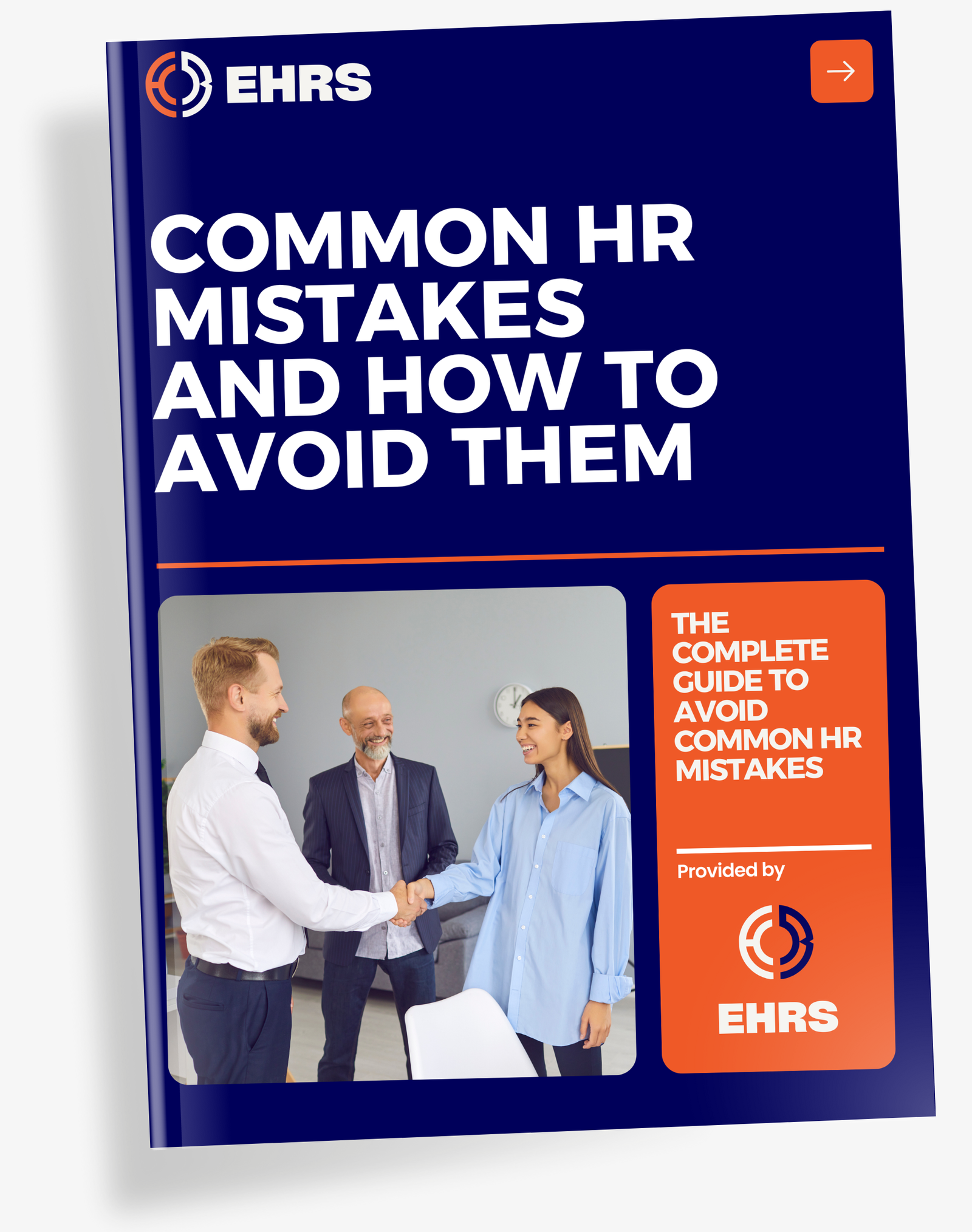Keeping up with constantly shifting employment laws can feel like an uphill battle, can’t it? For many employers, HR compliance issues have become a daily challenge. This piece explores key hurdles in workforce regulations, remote work adjustments, and international complications that businesses must navigate. Let’s face it—understanding these elements helps prevent legal missteps and fair workplace practices. Surprisingly, the solutions might be simpler than you think. We’ll walk through actionable strategies and preventive measures to build stronger HR compliance frameworks.
Table of contents
- Core HR Compliance Challenges
- Remote Workforce Compliance
- Global Compliance Complexities
- Compliance Documentation Strategies
- Emerging Compliance Trends
- Proactive Compliance Solutions
Core HR Compliance Challenges
Evolving Labor Laws & Regulations
Employment regulations regularly change across jurisdictions, creating persistent challenges for businesses. Federal and state labor updates continuously reshape hiring practices and workplace policies—employers, especially smaller companies, must monitor these shifts closely. Regular policy reviews become vital to align operations with current standards and avoid disputes.
Pay transparency rules and equal pay mandates now rank among top concerns for organizations. Jurisdictional variations complicate compliance, particularly for businesses operating across state lines. California’s stringent salary disclosure requirements, for instance, demand clear communication about compensation ranges. Conducting pay equity analyses helps identify gaps, ensuring fair treatment while meeting regulatory expectations.
Common Compliance Pitfalls
Obsolete policy documents and uneven enforcement practices frequently trigger compliance failures. HR Compliance Issues for Employers are often related to documents getting obsolete after recent new laws updates. Recent data highlights recurring issues across industries:
- Pay Calculation Errors: Missteps in overtime calculations and worker classifications account for 0% of reported violations. The Department of Labor typically mandates back payments plus penalties for FLSA infractions.
- Worker Classification Issues: Mistaking employees for contractors risks benefit denials and tax complications. Proper classification safeguards both workers and company interests.
- Healthcare Coverage Shortfalls: Mid-sized firms faced penalties up to $0 last year for ACA non-compliance. Offering qualifying health plans remains critical for employee retention and legal safety.
- Documentation Oversights: Simple Form I-9 mistakes can snowball into major problems. Designating knowledgeable staff and implementing verification protocols minimizes these risks.
Maintaining current policies isn’t just about avoiding fines—it directly impacts employee trust and organizational reputation. Regular handbook updates help eliminate discriminatory language while ensuring alignment with anti-harassment laws. Consistent policy application across departments proves equally important for maintaining workplace fairness.
| Country/State | Minimum Wage (USD) | Notes |
|---|---|---|
| United States (Federal) | 7.25 | Many states have higher minimum wage laws. |
| California | 16.00 | One of the highest state minimum wages. |
| Germany | 13.36 | Minimum wage applies to nearly all workers. |
Key Insight: Regional wage variations complicate compliance for companies with multi-state or international teams. Proactive consultation with HR specialists helps navigate these complexities—consider scheduling a compliance review to assess your organization’s standing.
Remote Workforce Compliance
Multi-State Tax Obligations
Nexus creation risks pose real challenges for businesses managing distributed teams. When workers operate from states where the company has no physical offices, unexpected tax liabilities can emerge. Organizations might suddenly contend with income tax, franchise tax, or sales tax obligations. Determining which activities trigger these requirements becomes critical for maintaining compliance across borders.
Tracking work hours across time zones requires particular attention. While some states mandate daily overtime pay after 8 hours, others follow weekly thresholds. Implementing reliable time-tracking systems helps companies adhere to both FLSA standards and local regulations. Remember: misclassifying teleworkers’ hours can lead to costly disputes, regardless of where employees reside.
Well-structured remote work agreements form the backbone of sustainable distributed operations. Consider these key components:
- Jurisdiction Clauses: Specify governing laws to prevent conflicts when employees work across state lines. These clauses help prevent jurisdictional disputes that could impact business continuity.
- Equipment Reimbursement: Outline policies for covering home office costs and technology upgrades. Transparent reimbursement practices demonstrate organizational commitment to worker support.
- Data Security Protocols: Define mandatory cybersecurity measures for handling sensitive resources. With remote access becoming standard, protecting digital assets remains a top priority for companies.
- Performance Expectations: Establish measurable job metrics tailored to remote collaboration. Clear benchmarks help teams maintain productivity without micromanagement.
- Working Hours and Availability: Set response time expectations while respecting local labor laws. Balancing flexibility with structure prevents burnout and supports employee health.
By addressing these elements systematically, businesses can reap the benefits of remote work while minimizing compliance risks. The key lies in creating frameworks that adapt to both company needs and evolving employment regulations.
Global Compliance Complexities
Cross-Border Employment Laws
Navigating EU GDPR and international data protection rules remains challenging for businesses. Handling employee information demands meticulous care – especially health data – to meet strict privacy standards. Consider this: US and EU regulations differ so markedly that companies often need localized strategies. Organizations must align their data practices with these evolving standards, leveraging resources like the CNIL’s guides to avoid costly missteps.
When examining mandatory benefits across global markets, the variations surprise even seasoned professionals. Take Asia and Europe: while some countries mandate 13th-month pay, others set specific leave thresholds impacting job conditions. A Glassdoor study highlights this disparity, showing US businesses trailing European counterparts in paid leave benefits. Local regulations here truly shape organizational policies.
| Country | Employment Protection |
|---|---|
| United States | “At-will” employment in most states; allows termination at any time without cause (except for discrimination). |
| United Kingdom | Employees with 2+ years of service have protection against unfair dismissal. |
| Germany | Strong protection against termination. Works council must be consulted in companies with >10 employees. |
| Japan | Strict restrictions on termination; terminations allowed only in extreme cases with reasonable and socially justifiable grounds. |
Legend: This table provides a concise overview of termination laws in the US, UK, Germany, and Japan, highlighting the level of employment protection and acceptable reasons for termination in each country.
Compliance Documentation Strategies
For businesses, audit trails for I-9 forms and eligibility verification remain vital, highlighting the need for meticulous record-keeping practices across organizations.
Companies should prioritize maintaining OSHA-required injury logs—a cornerstone of workplace health and safety compliance. Yet incomplete 300A forms frequently trigger penalties, showing why precision in documentation matters. These records must align with retention timelines to meet regulatory standards. Beyond avoiding fines, thorough documentation fosters safer environments for workers while supporting broader occupational health objectives. Local businesses can access specialized resources through Europe HR Solutions’ free consultation to strengthen their compliance frameworks.
Forward-thinking organizations increasingly adopt digital tools to monitor employee certifications and compliance deadlines. In sectors requiring periodic recertification, tracking expiration dates becomes particularly important—automated alerts help staff maintain valid credentials, reducing employment law risks. When integrated thoughtfully, these systems don’t just simplify management tasks; they deliver measurable benefits for operational efficiency and workforce reliability.
Emerging Compliance Trends
AI hiring tools impact EEOC compliance and bias prevention.
Non-compete agreements face growing scrutiny across states, creating headaches for companies. With some regions banning these clauses entirely, businesses lose traditional tools for protecting intellectual assets. This shift forces organizations to develop alternative strategies for safeguarding proprietary information while respecting worker mobility rights.
Cannabis legalization introduces complex policy challenges for local employers. Here are key cannabis workplace policies required in legalized states:
- Drug-Free Workplace Policy: Clear guidelines about on-the-job impairment help maintain safety while addressing health concerns. These policies should balance business needs with employee rights.
- Medical Cannabis Accommodations: About half of states with medical cannabis laws address anti-discrimination for medical cannabis patients. Companies must navigate this carefully, aligning with local anti-discrimination laws.
- Updated Testing Protocols: Traditional drug screening often fails to detect current impairment. Organizations should consult health experts to develop more effective safety measures.
- Off-Duty Use Policies: Many businesses now tolerate private cannabis use while setting strict workplace rules. This approach helps attract talent without compromising safety standards.
- State Law Compliance: Regular policy reviews ensure alignment with evolving local regulations. Partnering with legal resources helps companies avoid costly missteps.
Navigating these changes demands constant attention to both federal guidelines and shifting state laws. Businesses that proactively update their compliance strategies often see benefits in employee retention and risk reduction.
Proactive Compliance Solutions
Compliance Training Frameworks
Core elements for harassment prevention programs serve as critical foundations for organizational compliance. Training frequency should align with both state requirements and practical business needs, keeping workers informed about current regulations. Proper documentation of participation isn’t just paperwork – it’s concrete proof of an organization’s commitment to accountability. Well-structured programs naturally foster workplaces where respect and compliance coexist.
Europe HR Solutions crafts global training initiatives that adapt to specific company contexts. Cultural nuances directly shape content development, making programs resonate across diverse teams. Their specialists maintain up-to-date knowledge of labor laws and employment standards, ensuring businesses avoid costly missteps. Curious how this applies to your organization? Explore tailored strategies through their free consultation offering.
Measuring program effectiveness goes beyond checking boxes. Key performance indicators reveal tangible business benefits, from reduced harassment incidents to improved employee retention. Regular evaluations help organizations refine their approach, turning compliance from obligation into strategic advantage.
Technology-Driven Compliance
Modern tools now automate regulation tracking and policy updates – a game-changer for companies managing multiple local jurisdictions. Real-time alerts about labor law changes enable proactive adjustments, keeping businesses ahead of compliance deadlines.
Integration between HR platforms and compliance systems creates operational efficiencies many companies overlook. Automated data synchronization not only streamlines audits but minimizes human error risks. Robust encryption protocols protect sensitive worker information while meeting strict privacy regulations – a dual benefit organizations can’t ignore.
Consider how Europe HR Solutions resolved compliance challenges for a multinational retailer. By implementing customized tracking systems and management training, they achieved policy adherence. Such cases demonstrate how strategic compliance management directly contributes to workplace health and business continuity.
Managing HR compliance demands ongoing attention. Keeping up with changing labor laws, maintaining fair pay standards, and investing in employee training all play critical roles. Act now—proactive measures not only protect your organization but also cultivate a more equitable and productive work environment.
Frequently Asked Questions

How can companies ensure their BYOD (Bring Your Own Device) policies comply with data privacy and security regulations, especially in an international context?
To ensure BYOD policies comply with international data privacy and security regulations, companies must develop a clear and detailed policy that emphasizes data security and compliance with applicable laws. This includes specifying employee and company responsibilities for data protection.
Implementing technical security measures like Mobile Device Management (MDM) software, data encryption, and two-factor authentication is crucial. Companies must also respect international privacy regulations such as GDPR, ensuring transparent data processing and granting employees rights to access, rectify, and delete their data.
What are the implications of the increasing use of AI in performance management tools in terms of potential bias and compliance with discrimination laws?
The increasing use of AI in performance management carries risks of bias and non-compliance with discrimination laws. AI algorithms can be biased if training data reflects existing prejudices, leading to unfair performance evaluations for certain groups. Detecting and mitigating these algorithmic biases is crucial.
To ensure compliance, it’s essential to test algorithms for bias before application and define fairness criteria. Transparency and explainability of AI are also crucial, allowing analysis of models that deviate from expected results. Authorities are increasingly regulating AI to ensure respect for fundamental rights.
How can companies adapt their parental leave policies to comply with different state and local laws, and how does this affect workforce planning?
Companies must monitor parental leave laws and regulations across different jurisdictions to adapt their policies. This involves harmonizing policies with the legal requirements of each state and locality, potentially providing different leave durations or pay levels based on location.
Clear communication of parental leave policies to all employees is essential, along with training managers on the relevant laws and policies. Companies should also anticipate absences related to parental leave and plan accordingly, potentially hiring temporary staff or reorganizing tasks to maintain business continuity.
What strategies are available for managing mental health issues in the workplace, and how can employers offer appropriate support while respecting employee confidentiality and complying with privacy laws?
To manage mental health issues, employers can modify working conditions that lead to mental health degradation, implementing preventative measures. Offering appropriate support includes informing and consulting with resources that can assist employees, aligning with regulations like the French law “Santé au travail” which emphasizes prevention.
Employers should respect employee confidentiality, as health information is private. They must provide reasonable accommodations for health issues while protecting privacy, adhering to regulations like GDPR. Implementing tools to prevent psychological risks such as burn-out is also critical.
How to implement an effective compliance program for remote workers that respects local data protection laws (e.g., GDPR) and ensures the security of company information?
Implementing an effective compliance program for remote workers requires securing the company’s information system. This includes establishing a security charter with minimal rules for employees to follow, as recommended by data protection authorities.
Key elements include raising awareness and training employees on security issues related to remote work, ensuring tools comply with GDPR, and implementing measures like multi-factor authentication (MFA) for cloud applications. Regular security system updates and restrictions on personal device use without control are also essential.
What tools and strategies are available to help companies conduct regular compliance audits and identify areas for improvement?
To help companies conduct regular compliance audits, several tools and strategies are available. Regular HR audits are recommended annually or bi-annually, along with using a compliance checklist to ensure all rules and regulations are met.
Compliance management software can help companies adhere to internal policies, industry requirements, and legal protocols. Additionally, HR diagnostics performed by professionals can identify risks in HR practices, and establishing a regulatory repository ensures compliance with activities.





